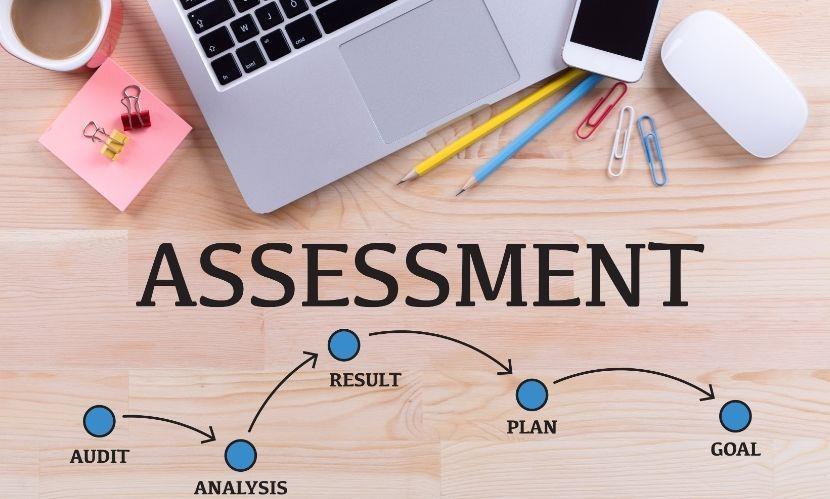Understanding Formative vs. Summative Assessments: Key Differences
and Importance in Education
Assessment plays a crucial role in the educational process, serving as a guide for both educators and students. Among the various types of assessments, formative and summative assessments are two of the most widely discussed. Each serves a distinct purpose and provides unique insights into the learning process. Let's delve deeper into the differences between these two assessment types, drawing insights from educational resources.

Formative Assessment: A Continuous Feedback Loop
Formative assessments are designed to monitor student learning throughout the instructional process. They are typically low-stakes and provide ongoing feedback that educators can use to adjust their teaching strategies. Examples include quizzes, classroom discussions, observations, and even informal assessments like exit tickets. The primary goal of formative assessments is to enhance student learning and engagement.
According to the blog from Vet Resources, formative assessments help identify areas where students may struggle and allow teachers to intervene promptly. This iterative process fosters a supportive learning environment where students can receive constructive feedback and adjust in real time. Research has shown that formative
assessments can lead to significant improvements in student performance, as they encourage active participation, self-reflection, and motivation.
Formative assessments also help create a culture of learning where mistakes are viewed as opportunities for growth. By emphasizing the learning process rather than just the final outcome, educators can nurture students’ confidence and resilience.
Summative Assessment: Measuring Learning Outcomes
In contrast, summative assessments occur at the end of an instructional unit or course and are intended to evaluate overall student learning and achievement. These assessments are often high-stakes, such as final exams, standardized tests, or capstone projects. The primary focus is on measuring how well students have grasped the material.
As highlighted in the Vet Resources blog, summative assessments provide a snapshot of what students have learned and can be used for accountability purposes, both for students and educators. They are instrumental in determining whether learning objectives have been met and are often tied to grades or certifications. However, since they are conducted after the learning has taken place, they do not offer the same level of feedback that formative assessments do.
While summative assessments can inform future curriculum decisions and teaching strategies, they can also create anxiety among students, especially when tied to highstakes evaluations. This underscores the importance of balancing both assessment types to ensure a comprehensive approach to student evaluation.
Key Differences Between Formative Assessment and Summative Assessment
1. Purpose:
o Formative: To monitor student learning and provide ongoing feedback for improvement, fostering a growth mindset.
o Summative: To evaluate student learning at the end of an instructional period, determining overall achievement and understanding.
2. Timing:
o Formative: Conducted throughout the learning process, often integrated into daily activities.
o Summative: Administered at the conclusion of a unit or course, assessing cumulative knowledge.
3. Feedback:
o Formative: Immediate and constructive, aimed at guiding further learning and adjustments.
o Summative: Generally final and evaluative, offering insights primarily for future curriculum planning rather than immediate improvement.
4. Impact on Learning:
o Formative: Enhances student engagement and self-regulation, leading to deeper understanding and retention.
o Summative: Measures the extent of learning but does not influence future learning strategies directly.
5. Stake:
o Formative: Low-stakes; often has no direct impact on final grades.
o Summative: High-stakes; significantly influences final grades and academic progression.
The Importance of a Balanced Assessment Approach
While formative and summative assessments serve different purposes, it is essential for educators to use both in tandem. A balanced approach allows educators to cultivate an environment where ongoing learning is prioritized while also measuring overall achievement effectively.
Formative assessments can be used to inform instructional decisions, allowing teachers to adapt lessons based on real-time student feedback. For example, if formative assessments reveal that a majority of students are struggling with a particular concept, teachers can revisit that topic and employ different teaching strategies. This adaptability is crucial in meeting diverse student needs.
On the other hand, summative assessments play a vital role in providing a clear picture of student progress over time. They help in establishing accountability and ensuring that educational standards are met. By understanding how students perform at the end of a course, educators can reflect on the effectiveness of their teaching and make necessary adjustments to improve future instructional practices.
Conclusion
Both formative and summative assessments are integral to the educational landscape. Formative assessments enhance learning through continuous feedback, while summative assessments provide a necessary measure of student achievement. Educators should strive to balance both types of assessments to create a comprehensive strategy that supports student learning effectively.
Incorporating both formative and summative assessments not only enhances teaching efficacy but also empowers students to take charge of their learning journey. This dual approach ultimately leads to improved educational outcomes, fostering a deeper understanding of the material and preparing students for future challenges. By recognizing the value of each type of assessment, educators can create a dynamic and responsive learning environment that meets the needs of all students.
About Us
We aim to provide only the best of resources to your RTO at competitive market rates. We are here to ensure that each resource is meticulously validated to guarantee top quality by our exceptional Subject Matter Experts and proofread by compliance experts. Our talent members are inclined towards developing only the top-quality VET Resources, RTO Training Resources, and other RTO materials for Certificate I up to the Graduate Diploma level, which are highly suitable for Australian qualifications.
Contact Us
Address - 13/19 Radnor Drive, Deer Park VIC 3023, Australia
Phone Number - 1800 959 958
Mail - info@vetresources.com.au
Website - https://vetresources.com.au/
